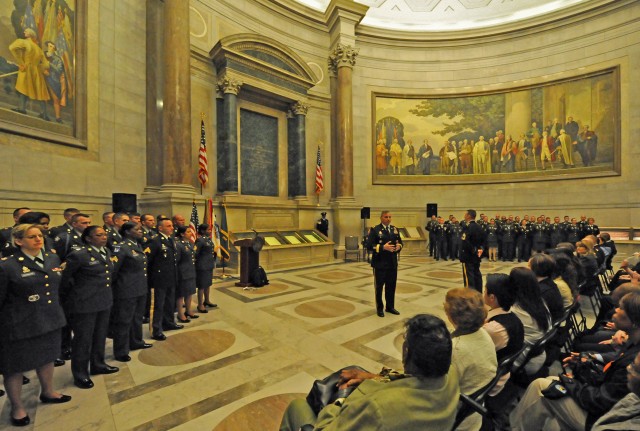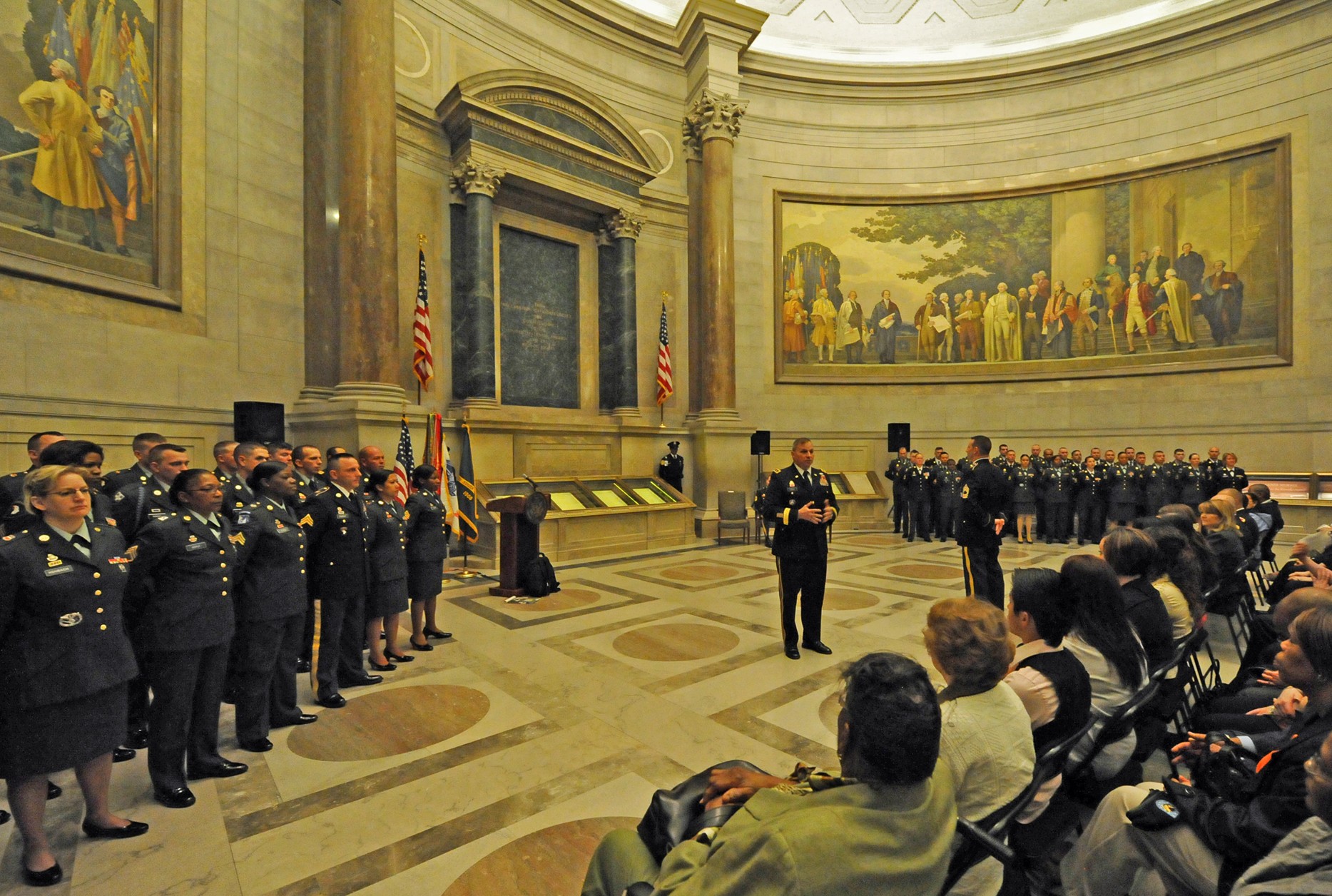
WASHINGTON (Army News Service, April 22, 2011) -- On the cusp of the Army Reserve's 103rd birthday, which is April 23, 2011, 56 Reserve Soldiers from all 50 states and the territories gathered in the National Archives rotunda April 20, 2011, to re-enlist.
Lt. Gen. Jack C. Stultz, the Army Reserve chief, administered the oath or affirmation to defend the Constitution, the original of which is housed along with the Declaration of Independence and Bill of Rights in heavily-guarded cases within the rotunda.
"The Soldiers we have gathered here really do represent what America's is all about," he said. "It's about great men and women stepping up every day, taking an oath of allegiance, leaving their families, leaving their kids, leaving their homes, leaving their jobs and going to risk their lives to defend our freedom.
"The significance of this re-enlistment today is they're willing to continue to serve their nation when they don't have to," Stultz said. "They don't have to be here, raising their hands, saying I want to stay in the Army Reserve, knowing that they'll probably be asked to go to Iraq or Afghanistan or to some other part of the world. They're willing to do that, and that's what this nation was founded on."
The 56 Reserve Soldiers who re-enlisted are all part of the operational Reserve.
"They are the people who are saying, 'I understand what I'm getting into, and I want to be part of it,'" Stultz said.
The earliest version of the Army Reserve started in 1908 to provide a reserve of medical officers for the Army, then was reorganized following the Great War under the National Defense Act of 1920, which reorganized U.S. land forces into the active Army, National Guard and an Organized Reserve. Reserve Soldiers went on to perform public works projects during the depression of the 1930s and later served in World War II, Korea and Vietnam.
Today, the Army Reserve has a force of 206,000 volunteers serving in 25 countries. Many of these warriors have deployed more than twice to Iraq and Afghanistan as the Reserve force has morphed into an operational reserve from a one-weekend-a-month, two-weeks-a-summer strategic organization. Stultz called the old Army Reserve a "force of last resort."
But that all changed following Sept. 11, 2001, when the Army Reserve started transforming into an operational force that would be used on a regular basis, Stultz said, adding that's when some people left the Reserve because they didn't sign on to possibly be full-time and deployed. Between 2002-2003, the Army Reserve fell from 210,000 to around 185,000 and gradually grew back to 206,000.
The Army Reserve and National Guard are now the enablers for the combat force -- armor, infantry, artillery -- and make up 75 percent of the engineer support, 80 percent of transportation support and 75 percent of the Army's medical support, Stultz said. Reservists also bring their civilian skills and talents to bear as educators and law-enforcement officers by helping the NATO Training Mission teach Afghan soldiers to read, write and serve as more efficient policemen.

Social Sharing